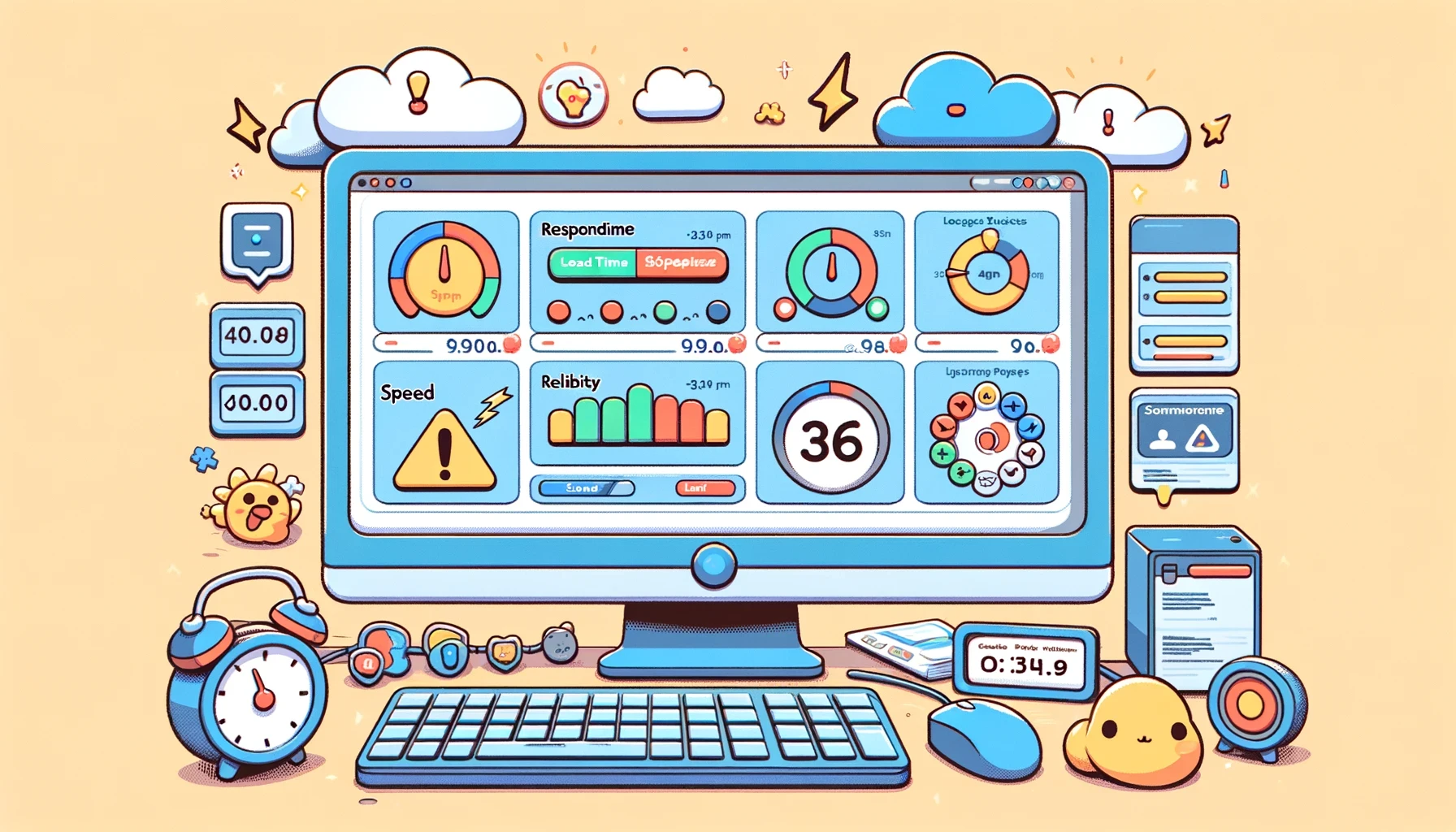Why Do You Need Website Performance Monitoring?
May 26, 2024

In today's digital era, the speed and reliability of your website are crucial to your business's success. This is where website performance monitoring comes into play. But why exactly do you need it? This article will dive into the importance of website performance monitoring, its benefits, and the core reasons your business should prioritize it.
Understanding Website Performance Monitoring
Website performance monitoring is the continuous process of testing and analyzing a website's speed, uptime, and overall functionality to ensure it delivers a seamless user experience. It involves using specialized tools to track various performance metrics and quickly identify and resolve issues.
Key Reasons for Website Performance Monitoring
Enhanced User Experience: A fast and reliable website is essential for keeping visitors engaged. Slow load times and downtimes can frustrate users, leading to higher bounce rates and lost opportunities. Performance monitoring helps ensure your website runs smoothly, providing a positive user experience.
SEO and Search Engine Rankings: Search engines like Google prioritize websites that load quickly and offer a good user experience. Poor performance can negatively impact your search engine rankings, making it harder for potential customers to find you. By monitoring performance, you can improve your site's SEO.
Competitive Advantage: In a highly competitive online market, every second counts. A fast and efficient website can give you an edge over competitors. Performance monitoring helps you maintain optimal speed and reliability, ensuring you stay ahead of the competition.
Revenue Protection: For e-commerce businesses, website performance directly impacts sales. Slow loading times can lead to cart abandonment and lost sales. Monitoring performance helps ensure a smooth shopping experience, protecting your revenue.
Benefits of Website Performance Monitoring
Proactive Issue Detection: Monitoring tools can detect performance issues before they become significant problems. This proactive approach allows you to address potential bottlenecks and errors quickly.
Improved User Satisfaction: Ensuring your website loads quickly and operates smoothly leads to higher user satisfaction. Happy users are more likely to stay longer, explore more, and convert into customers.
Resource Optimization: Performance monitoring provides insights into resource usage on your website. This information can help you optimize resource allocation, ensuring efficient operation.
Detailed Analytics and Reporting: Monitoring tools offer detailed analytics and reports, helping you understand performance trends and identify areas for improvement.
How Website Performance Monitoring Works
Setup: Configure the monitoring tool with the URLs and performance metrics to track. Set the frequency of checks and choose notification methods for alerts.
Continuous Monitoring: The tool continuously monitors your website at specified intervals, tracking performance metrics like load times, response times, and uptime.
Issue Detection: If performance issues like slow loading times or downtimes are detected, the tool logs the details and sends alerts.
Alerts and Notifications: Real-time alerts are sent via email, SMS, or push notifications, allowing you to respond quickly to any issues.
Reporting and Analysis: Detailed reports and analytics help you understand performance trends and make data-driven decisions for optimization.
Key Metrics Tracked in Website Performance Monitoring
Load Time: Measures how long it takes for a webpage to fully load. Faster load times improve user experience.
Response Time: The time taken for the server to respond to a request. Lower response times indicate better server performance.
Uptime: The percentage of time the website is operational and accessible. High uptime is critical for reliability.
Page Speed: Overall speed at which a webpage loads and becomes interactive. Faster page speed enhances user satisfaction.
Error Rates: Frequency of errors occurring on the website. Lower error rates indicate better stability.
Choosing the Right Website Performance Monitoring Tool
When selecting a website performance monitoring tool, consider the following:
Comprehensive Metrics: Ensure the tool tracks all essential performance metrics.
Frequency of Checks: More frequent checks enable quicker detection of issues.
Notification Methods: Multiple notification options allow you to choose the most convenient alert method.
Ease of Use: The tool should be user-friendly and easy to set up.
Detailed Reporting: Look for tools that offer in-depth analytics and reporting for optimization guidance.
Conclusion
Website performance monitoring is essential for maintaining a fast, reliable, and user-friendly website. It ensures that your site operates smoothly, enhances user experience, supports SEO efforts, and protects revenue. By investing in a reliable performance monitoring tool, you can proactively manage your website’s performance and stay ahead of potential issues.
For more insights on website performance monitoring, read this comprehensive guide on Wikipedia.
To compare various performance monitoring tools, check out this detailed comparison on TechRadar.
For more information on how EzUptime can help you monitor your website’s performance, visit our homepage.
EzUptime is a simple yet efficient Uptime Monitoring service
Learn more
